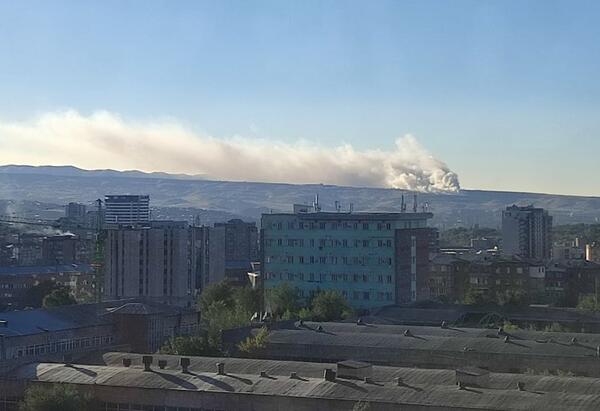
A fire has again occurred at the Nubarashen landfill in Yerevan. The report of the blaze came in during the evening, and six fire crews and 27 rescuers were involved in extinguishing it. The last similar incident at this landfill was in August. Burning waste at the site can affect the city's air quality, raising concerns among residents and authorities. The report notes the involvement of civic and government bodies in addressing the aftermath. Repeated fires at the landfill point to a waste management problem and an environmental threat.
Air quality in Yerevan in October 2025:
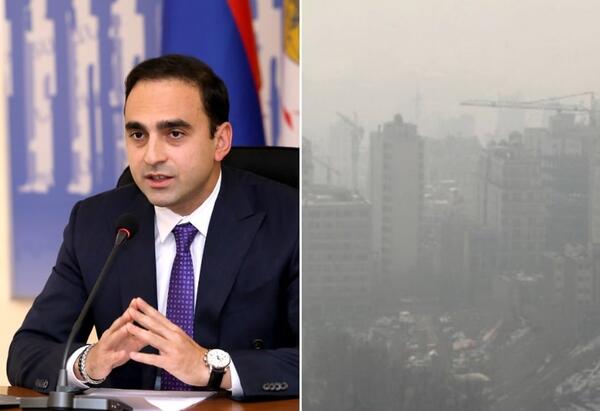
Yerevan mayor Tigran Avinyan denied rumors of poor air quality in Yerevan during the summer and autumn months, noting that this is not true. According to him, data from 166 installed devices confirm good air quality in August and September. However, he warned that air quality problems may begin in November. It was especially noted that construction work in certain areas is creating local pollution. Authorities intend to toughen penalties for developers who violate requirements to control dust and pollution. Additional disciplinary measures against violators will be taken in December.
Air quality in Yerevan in October 2025:
Read the full article on newsarmenia.am →
“The main air pollution problem in Yerevan occurs in winter: Tigran Avinyan” on ecolur.org →
“Mayor of Yerevan says there are no air quality problems in Yerevan in summer” on newsarmenia.am →
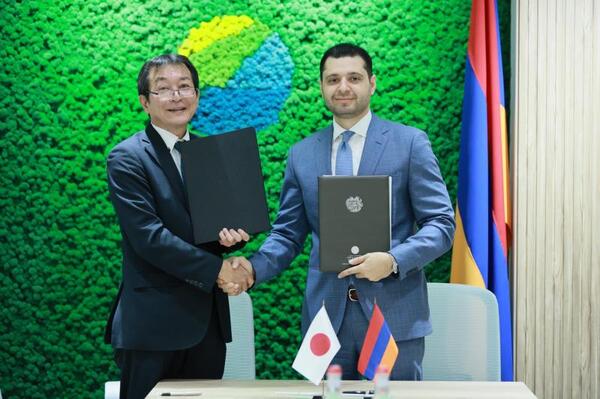
On September 29, 2025, Armenia's Minister of Environment Ambartsum Matevosyan and Japanese Ambassador Aoki Yutaka signed a grant agreement for economic and social development. Japan will provide Armenia with approximately $1.7 million to modernize air quality monitoring stations and procure equipment for the Hydrometeorology and Monitoring Center (a state non-commercial organization). This will improve the air pollution monitoring system, enhance data quality control, and help establish a sustainable environment. Reference stations have already been purchased with state funding. The Japanese government's grant will be an important continuation of environmental reforms in Armenia.
Air quality in Yerevan in September 2025:
Read the full article on env.am →
“Armenia's air monitoring system to be modernized with Japan's support” on env.am →
“Japan to help Armenia modernize atmospheric air quality monitoring” on newsarmenia.am →
“Automatic air pollutant monitoring equipment to be installed in Yerevan” on news.am →
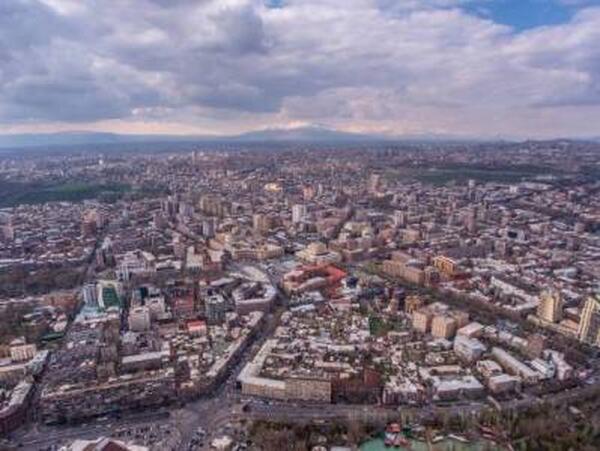
Yerevan has been recorded as having the worst air quality in the South Caucasus, which negatively affects the country's attractiveness. UN Resident Coordinator Francoise Jacob noted problems of land desertification and river pollution caused by agriculture, construction and mining activities. Only 0.6% of GDP is allocated to Armenia's environmental protection. Ahead of COP17, the importance of transitioning to a 'green' economy and restoring forests as a measure to improve air quality is particularly emphasized. Jacob urged Armenian banks to support sustainable development projects. The role of the state in protecting biodiversity is also underscored.
Air quality in Yerevan in September 2025:
Read the full article on news.am →
“Air pollution in Yerevan is 3-5 times above the permissible limit” on news.am →

The article examines the deterioration of air quality in Yerevan caused by regular fires at the Nubarashen landfill and other factors. Residents suffer from smoke, dust, and toxins, leading to allergies and respiratory problems. The city lacks a modern air quality monitoring system, and existing stations are not sufficiently effective. Experts point to the impact of industrial emissions, motor vehicle traffic, and a lack of green spaces on air quality. Yerevan authorities have for years postponed the construction of new landfills and a recycling facility, which worsens the problem. The article underscores the severe impact of air pollution on public health.
Air quality in Yerevan in September 2025:
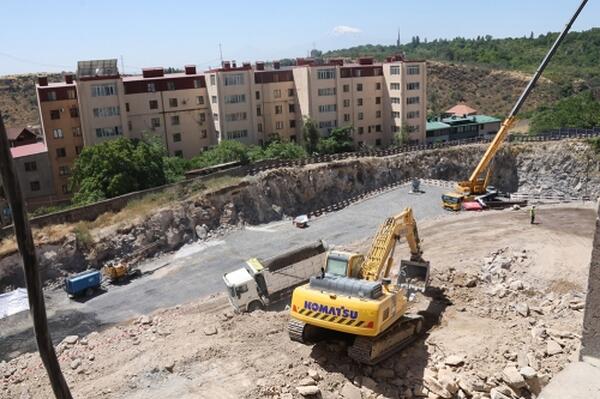
The Environmental and Subsoil Inspection Authority published inspection results for the first half of 2025 in the field of air quality protection. A total of 195 violations were recorded, including breaches in construction, manufacturing, and mining, as well as illegal transport of bulk materials and burning of waste. 134 administrative sanctions were imposed and fines totaling 9,650,000 drams were levied. Environmental damage was estimated at 100,544,532 drams. Four decisions were issued to suspend the activities of entities operating without permits for maximum permissible emissions. The main focus is on damage caused to air quality.
Air quality in Yerevan in August 2025:

The Government of Armenia has approved the Ministry of Environment’s project to fully modernize the air quality monitoring system by 2030. The new plan calls for implementing advanced standards aligned with World Health Organization recommendations, as well as upgrading laboratories and tools for modeling and forecasting air pollutants. The measures are intended to improve ambient air quality and promote better public health. The system upgrade will help modernize the state's air protection policy.
Air quality in Yerevan in August 2025:
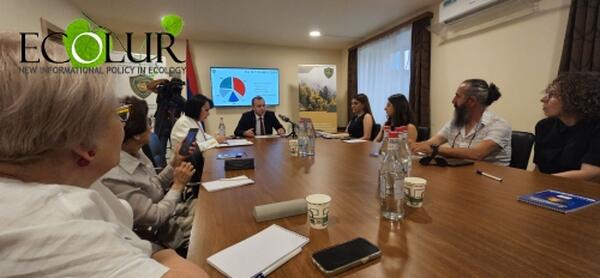
On July 10, 2025, the head of the Inspection Body for Environmental and Subsoil Protection, Ovannes Martirosyan, presented the results of supervisory activities for 2022-2024. Inspections were carried out in the areas of biodiversity, subsoil use, air quality, water resources, land use, and waste. In the field of air protection an increase in the number of detected violations was recorded (397 cases in 2024), and the total environmental damage sharply rose in 2024 to 2.35 billion drams. Administrative fines were also imposed for cases of air pollution. Inspection measures led to the suspension of operations at a number of facilities. The main focus is on monitoring violations and minimizing damage to the natural environment, including air quality.
Air quality in Yerevan in July 2025:

As part of the program for active civil society participation in Yerevan’s “Green Transition,” a roundtable was held dedicated to the city’s air pollution problems. Participants included representatives of the Yerevan municipality, the Ministry of Environment and other agencies, as well as journalists and civil society organizations. Key proposals included improving transportation, banning the burning of waste and landfills, creating green zones, strengthening oversight of industrial facilities and ensuring compliance with the law on atmospheric air protection. It was also recommended to obtain reliable data on air pollution and to monitor public health. These measures are aimed at improving air quality in Yerevan.
Air quality in Yerevan in June 2025:

Yerevan Mayor Tigran Avinyan met with the President of the Autonomous Community of Madrid, Isabel Díaz Ayuso, to discuss possible areas of cooperation between the cities. The meeting focused in particular on Madrid’s successful experience in improving air quality. It was agreed that Yerevan will study and apply effective solutions implemented in Madrid. The main goal is to adapt these best practices to improve air quality in the Armenian capital.
Air quality in Yerevan in June 2025:
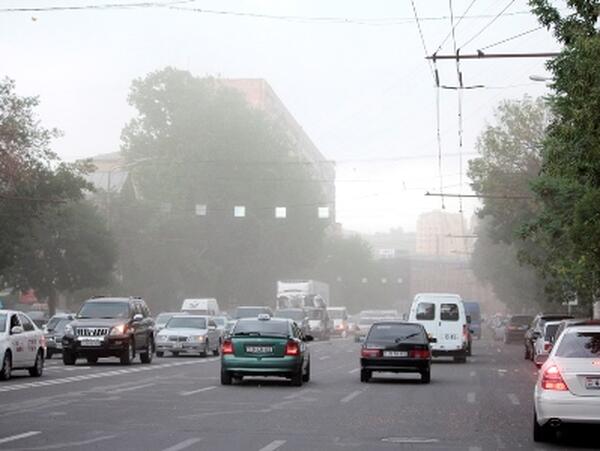
Armenia is implementing a five-year program to reduce atmospheric pollution, under which 16 air pollution monitoring stations will be purchased, 14 stationary and 2 mobile. Some of the devices have already been financed by foreign donors, and the rest are also planned to be purchased with donor support. A draft decree will be prepared requiring the use of water trucks to reduce dust at construction sites and mines, which should lower dust emissions. It is noted that in Yerevan air pollution levels exceed global standards by 5-7 times. Experts link this to dense development that disrupts air exchange and the presence of industry.
Air quality in Yerevan in May 2025:
Read the full article on am.sputniknews.ru →
“Armenia to purchase 14 stationary air quality monitoring stations” on news.am →
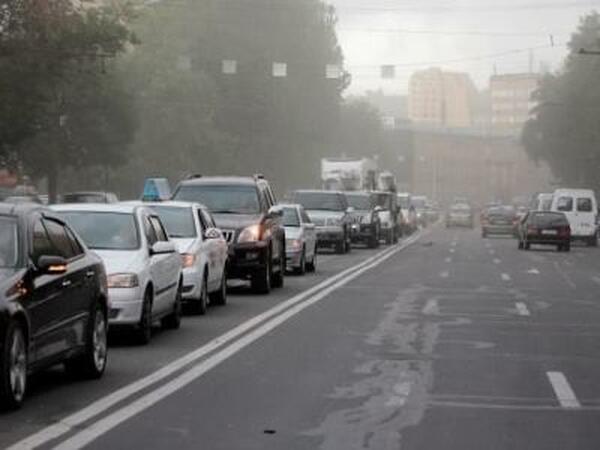
The Mayor of Yerevan, Tigran Avinyan, noted that construction work and the activity of quarries in Yerevan and beyond negatively affect air quality. He emphasized that installing dust-collection nets at construction sites is a measure aimed at protecting the health of the city's residents. Avinyan called on developers to take responsibility for the state of the environment and to comply with relevant environmental requirements. Failure to follow these measures during construction leads to air pollution and a deterioration in residents' living conditions. In this regard, Avinyan proposed substantially increasing fines for violators. The main focus is on combating air pollution in the capital.
Air quality in Yerevan in May 2025:

Yerevan Mayor Tigran Avinyan said that the city’s air pollution situation concerns the public. The mayor’s office noted that air quality worsens in winter, mainly due to the start of the heating season. Alongside gas, other fuels are used during this period, which increases the amount of fine PM2.5 particles in the atmosphere. Reduced air circulation in winter also contributes to the accumulation of pollutants. According to hydrometeorological data, the dust level in Yerevan in 2024 decreased compared with previous years; however, the problem persists mainly during the winter months.
Air quality in Yerevan in April 2025:
Read the full article on news.am →
“Yerevan City Hall blames citizens for the city's air pollution” on news.am →
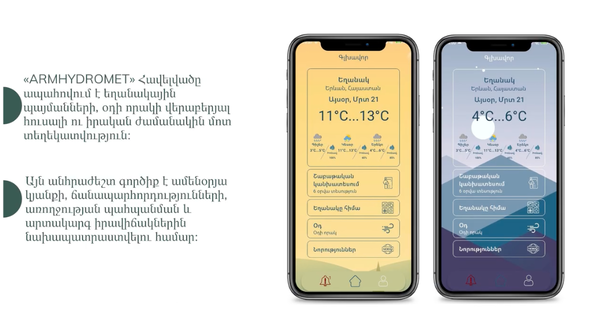
The Ministry of Environment of Armenia has launched the mobile app 'ARMHYDROMET'. It provides information on weather conditions and air quality. Users can access weekly forecasts, current weather, air quality data, and news sections. The new tool helps raise public awareness about air quality.
Air quality in Yerevan in March 2025:
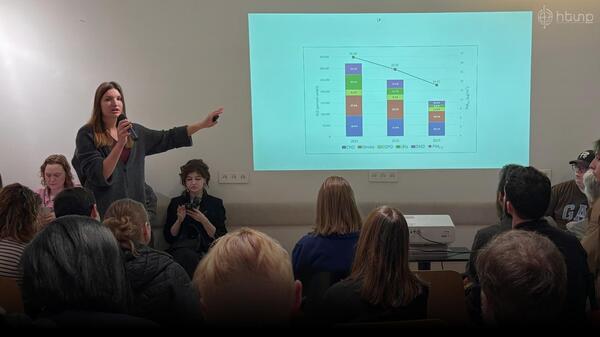
In a discussion organized by the Yerevan for People initiative, the main focus was on the level of air pollution in Yerevan. Participants discussed the impact of polluted air on health and exchanged data on the city's air quality.
Air quality in Yerevan in March 2025:
Read the full article on hetq.am →
“A discussion on air quality was held in Yerevan” on news.am →
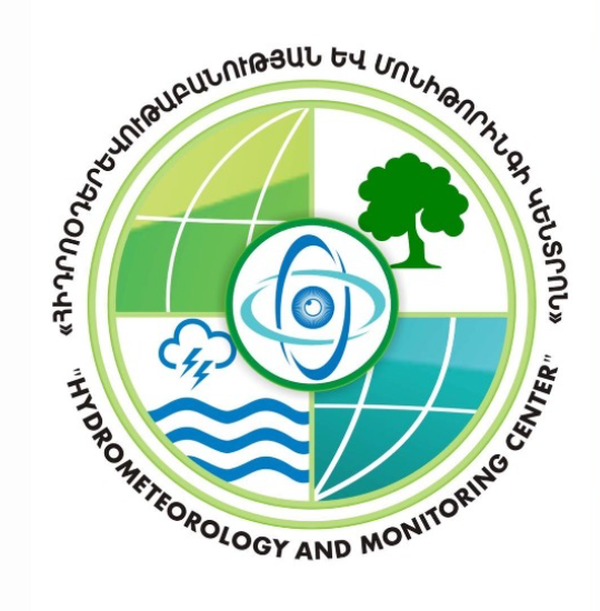
Due to an increase in violations related to atmospheric air protection, reported by both citizens and the environmental protection inspection, it has become necessary to develop the Action Plan for Atmospheric Air Protection for 2025-2030. As part of the draft government decree, the air quality monitoring system is planned to be modernized to meet international standards. The legislative framework will also be reviewed, enforcement will be strengthened, and administrative measures for non-compliance with the law will be revised. The main focus is on improving atmospheric air quality through comprehensive measures.
Air quality in Yerevan in March 2025:

The article describes a developed four-year program to improve air quality in Yerevan. The program's main objectives are to reduce emissions from major pollution sources (construction, transport, quarries, landfills, heating) and to enhance the air monitoring system. The program includes measures to increase green areas, introduce strict emissions standards, develop environmentally friendly transport, and inform the public. Cooperation with the Ministry of Environment of Armenia on a comprehensive atmospheric air protection program is also planned. Short-term and medium-term measures are foreseen, along with consultations with public and international organizations.
Air quality in Yerevan in March 2025:
Read the full article on armeniangc.com →
“A four-year program to reduce air pollution in Yerevan has been developed” on news.am →
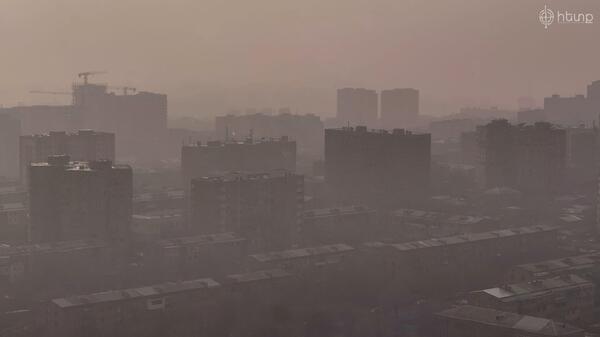
In recent months a debate has flared in Yerevan over critically high air pollution levels, despite earlier statements by Mayor Tigran Avinyan that the situation was within normal limits. Residents installing home monitoring sensors, as well as international platforms, record high pollution levels—especially fine particulate matter PM2.5, which causes serious harm to health. The municipality acknowledges the problem but attributes it to atmospheric conditions and dust buildup during the winter period; independent experts point to key anthropogenic factors — construction dust, vehicle emissions, and a lack of green spaces. In response to public pressure, the city hall announced the development of a four-year program to improve air quality, including greening measures and restrictions on old vehicles, and is awaiting the installation of new automatic monitoring stations to provide more accurate air quality data.
Air quality in Yerevan in February 2025:

The video raises the issue of air pollution in Yerevan, noting that Armenia, despite being considered a safe country, has the dirtiest air in the region. In 2022 the concentration of PM2.5 particles in the capital exceeded the standard by 5–7 times, and in 2024 the situation has worsened again. Public groups and activists, unlike the mayor's office, acknowledge the problem and are systematizing data, calling for an open dialogue. Causes of pollution cited include the city's natural location, the lack of centralized heating, and the use of gas and alternative heating methods. Although the mayor's office is taking steps such as purchasing buses and planting trees, activists believe a comprehensive approach is needed, including transport reform, strict control over construction sites, and involvement of environmental experts.
Air quality in Yerevan in January 2025:
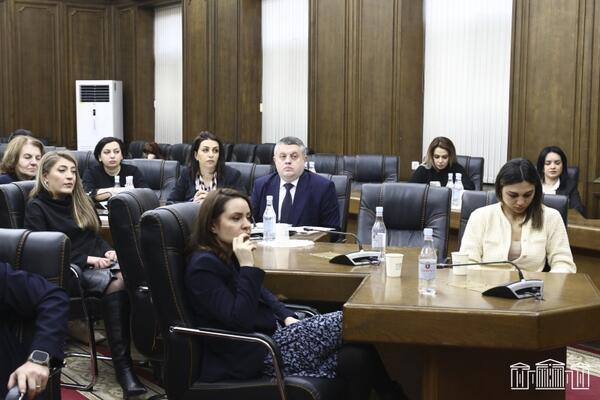
On January 9, the standing committees of the National Assembly of Armenia on territorial administration, local self-government, agriculture and environmental protection, and on healthcare organized a working discussion on the topic “Current state of air pollution in Yerevan, problems and ways to address them.” The main sources of air pollution were identified as construction works, nearby sand quarries, landfills, vehicle emissions, industrial enterprises, and the city’s geographical location. A representative of the municipality noted that in the winter months the maximum permissible concentrations of dust are exceeded by 1.1–3.4 times, which is considered an unfavorable but not hazardous level of pollution. It was emphasized that, if necessary, appropriate steps would be taken to introduce legislative regulation.
Air quality in Yerevan in January 2025:
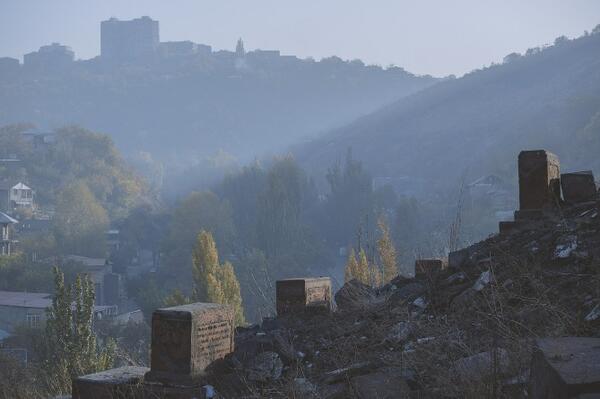
According to Levon Azizyan, director of the Center for Hydrometeorology and Monitoring, air pollution levels in Yerevan are unfavorable; however, the exceedances of standards are not dangerous to health. It is also noted that air pollution increases during the winter months.
Air quality in Yerevan in December 2024:
Read the full article on newsarmenia.am →
“Expert refutes: Air pollution in Yerevan exists but levels are not critical” on news.am →

Yerevan Mayor Tigran Avinyan has instructed that a four-year comprehensive plan to improve the city's air quality be developed within two months, including measures for greening, establishing shelterbelts (tree belts), and restricting the operation of older vehicles.
Air quality in Yerevan in December 2024:
Read the full article on ecolur.org →
“How Yerevan City Hall Plans to Combat Air Pollution” on radiovan.fm →
“Yerevan to develop a four-year program to improve air quality” on newsarmenia.am →

Air pollution in Yerevan exceeds sanitary standards by 5–7 times. The expert notes that this is linked to unresolved issues in municipal governance and insufficient green spaces.
Air quality in Yerevan in December 2024:
Read the full article on am.sputniknews.ru →
“Expert Identifies Yerevan's Most Environmentally Unfavorable Districts” on newsarmenia.am →
“"We're breathing poison": expert warns of lethal consequences of air pollution” on newsarmenia.am →
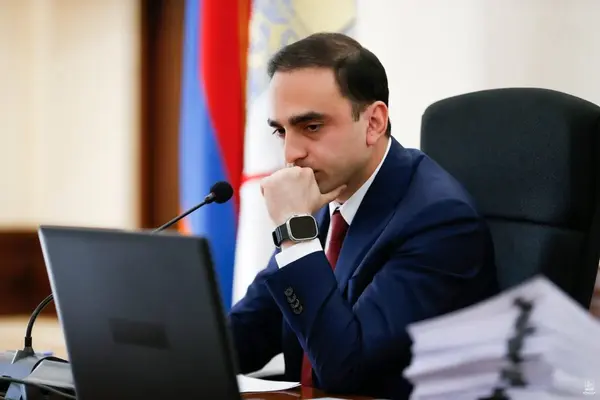
Yerevan Mayor Tigran Avinyan said that rumors about poor air quality in the city are a myth, citing data on low dust levels. However, the fact-checking team 'Provereno' found that PM10 is also an important pollution indicator, and its concentration often exceeds permissible limits.
Air quality in Yerevan in September 2024:
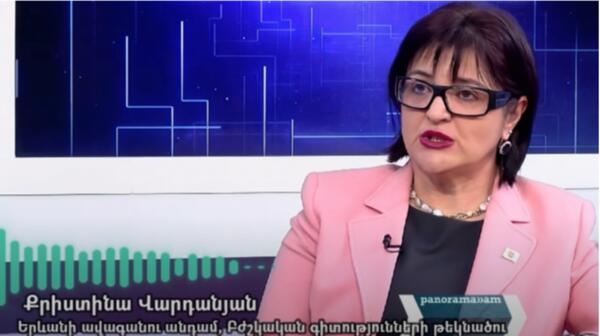
The article discusses conflicting data on air quality in Yerevan provided by the mayor's office and the Hydrometeorology Center. Kristina Vardanyan raises questions about the certification of instruments and the discrepancy between officials' statements and reality.
Air quality in Yerevan in September 2024: